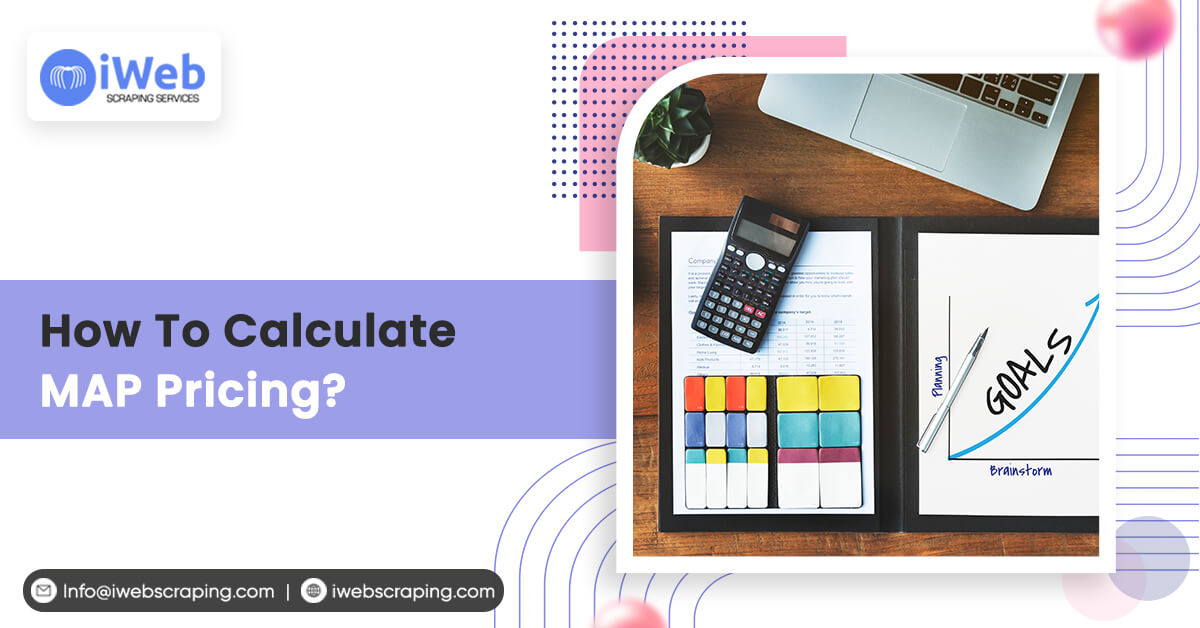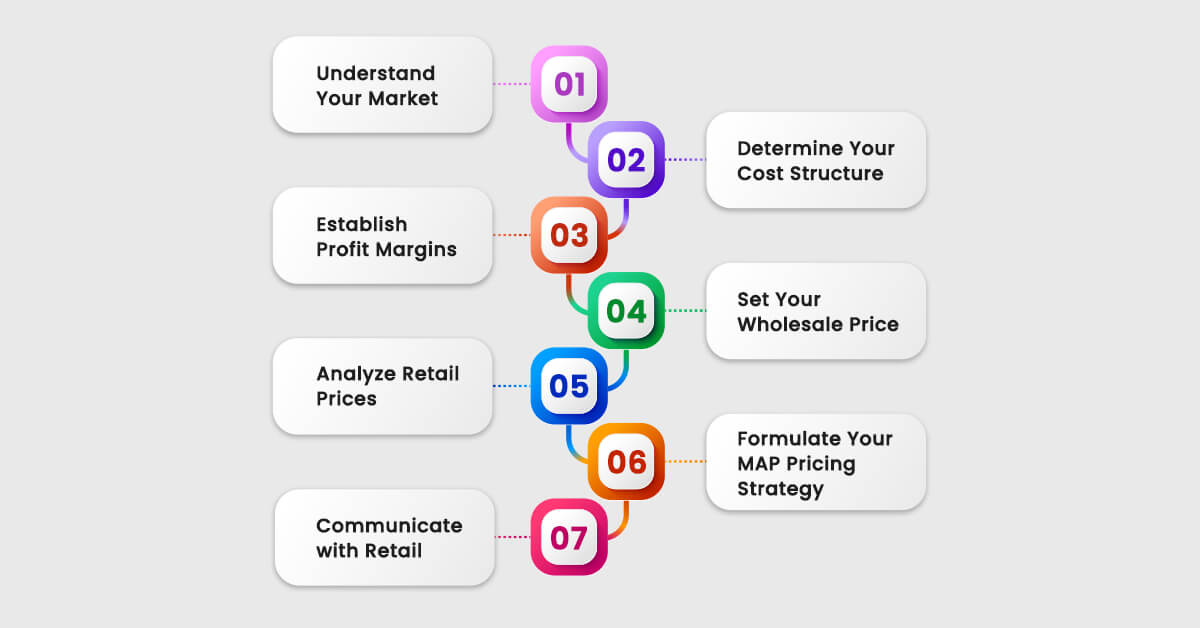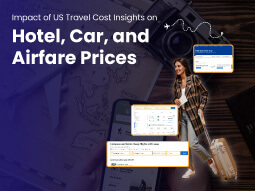How To Calculate MAP Pricing?

Manufacturers have adopted effective pricing strategies to protect brand value and maintain healthy relationships with retail partners. The particular strategy they mostly follow is Minimum Advertised Price (MAP) pricing. Any business needs to understand and calculate MAP pricing to aim for consistent pricing across different retail channels. In this blog, we will delve into the importance of MAP pricing, its significance, and the steps involved in calculating MAP Pricing. Also, we will explore how MAP monitoring and retail data scraping play pivotal roles in maintaining MAP pricing strategy.
What is MAP Pricing?
Minimum Advertised Price (MAP) is a rule from the companies that decides the lowest price at which stores can advertise the product. It is not the lowest price a store can sell the product for, but the lowest price they can show in advertisements. MAP helps ensure all stores compete healthily and keeps the value of a brand's products high.
What is the Importance of MAP Pricing?
Understanding the significance of MAP pricing is essential for any business looking to maintain a strong market presence and safeguard its brand integrity. Here are some key reasons why enforcing MAP pricing can significantly benefit your business:
- Protecting Brand Value: When companies enforce MAP pricing, they can stop retailers from having price wars, which can make their products look less valuable.
- Ensuring Fair Competition: MAP pricing makes sure that all retailers, no matter how big they are, can compete equitably without cutting prices too much.
- Maintaining Profit Margins: It helps companies and retailers keep their profits healthy.
- Building Consumer Trust: Keeping prices consistent across different places helps consumers trust the products more.
What are the Steps to Calculate MAP Pricing?

There are a few steps to calculate the Map Pricing, and here they are:
Understand Your Market
To effectively calculate MAP pricing, start by understanding your market dynamics. Analyze factors such as:
- Competitor Pricing: Examine the pricing strategies of your competitors. Identify the average price points and any MAP pricing they may have.
- Consumer Behavior: Understand how price-sensitive your target audience is and their buying patterns.
- Market Trends: Keep an eye on trends that could affect pricing, such as economic conditions or technological advancements.
Determine Your Cost Structure
Your cost structure forms the foundation of your MAP pricing strategy. Calculate all costs associated with bringing your product to market, including:
- Production Costs: Manufacturing, labor, and material costs.
- Logistics: Shipping, handling, and warehousing expenses.
- Marketing and Promotion: Advertising, packaging, and promotional costs.
Establish Profit Margins
Decide on the profit margins you aim to achieve. That involves balancing profitability with competitiveness. Consider:
- Gross Profit Margin: Profit margin is calculated by subtracting the direct expenses, or the cost of goods sold (COGS), from the total sales revenue, which includes returns, discounts, and allowances.
- Net Profit Margin: The Net profit margin means the percentage of revenue remaining after deducting expenses from sales.
Set Your Wholesale Price
Manufacturers determine the wholesale price of a product based on your cost structure and desired profit margins. That is the price at which you'll sell your products to retailers.
Analyze Retail Prices
Examine the retail prices of similar products in the market. That helps in setting competitive retail MAP pricing. Ensure your MAP price is neither too high to discourage retailers nor too low to undermine your brand's value.
Formulate Your MAP Pricing Strategy
With all the data at hand, draft a MAP pricing strategy. This document should include:s.
- MAP Price: The minimum advertised price for your products.
- Enforcement Guidelines: Procedures for Map monitoring compliance and addressing violations.
- Incentives for Compliance: These Benefits are for retailers who adhere to your MAP pricing, such as marketing support or better wholesale prices.
Communicate with Retail Partners
Communicate your MAP pricing strategy to all retail partners. And provide them with the necessary documentation and ensure they understand the importance of adhering to the retail MAP pricing.
How MAP Monitoring and Compliance Works?
To enforce Minimum Advertised Price (MAP) pricing, it is essential to engage in ongoing monitoring to guarantee adherence. This process involves employing MAP monitoring techniques and retail data scraping methods to ensure compliance.
MAP Monitoring
MAP monitoring means closely checking the prices of your products that are sold in different stores. You can do this by looking at the prices yourself or using special tools. Good MAP monitoring involves:
- Regular Audits: Periodically review advertised prices to ensure compliance.
- Price Alerts: Set up alerts for when prices drop below the MAP pricing.
- Violation Tracking: Keep a record of violations and take appropriate action.
Retail Data Scraping
Retail data scraping is a technique used to collect pricing data from different retail websites. This data can be used to monitor MAP compliance. Key aspects of retail data scraping include:
- Automation: Use automated tools to scrape large volumes of data efficiently.
- Accuracy: Ensure the data collected is accurate and up-to-date.
- Analysis: Analyze the data to identify trends, compliance issues, and areas for improvement.
What is the MAP Pricing Strategy?
A robust MAP pricing strategy goes beyond setting and enforcing prices. It involves a holistic approach to maintaining brand value and fostering positive relationships with retail partners.
What are the Key Components of a MAP Pricing Strategy?
Creating a strong MAP pricing strategy involves several crucial components and is vital for ensuring fairness and effectiveness. It's important to consider the following key elements:
- A well-defined MAP monitoring that is clear, fair, and enforceable.
- Educate retailers on the importance of MAP pricing strategy and how it benefits them.
- Apply the MAP pricing uniformly across all retailers.
- And be prepared to adjust your MAP pricing stratgey in response to market changes or feedback from retail partners.
What are the Challenges in MAP Pricing?
Despite its benefits, the MAP pricing strategy comes with its own set of challenges:
- Some retailers may resist MAP pricing strategy , as they find limitations on their pricing freedom.
- In some jurisdictions, strict MAP pricing may be seen as anti-competitive.
- And ensuring consistent enforcement across all channels can be resource-intensive.
What are the Best Practices for MAP Pricing?
To effectively implement and maintain a MAP pricing strategy, consider these best practices:
- Be transparent with your retailers about your MAP pricing strategy and the reasons behind it.
- Offer support to retailers in the form of marketing resources or financial incentives for compliance.
- Be flexible and negotiate with retailers to find a mutually beneficial arrangement.
- Leverage technology for efficient MAP monitoring and retail data scraping.
- Maintain open lines of communication with your retail partners to address any concerns or issues promptly.
Conclusion
Keeping your prices fair and ensuring all stores sell your products at the same price is essential for your brand. To do this, you need Map pricing to understand the market, know how much it costs to make your products and set clear rules. You also need to check that retailers follow these rules and take action if they do not. It can be tricky, but if you do it right, you can manage the challenges and have good relationships with the retailers that sell your products.
To keep your prices fair, you need to work hard, be open about what you're doing, and keep an eye on things all the time. If you do this, you will not only protect your brand, but you'll also make your customers and the retailers that sell your products trust you. We know that keeping track of prices and monitoring multiple e-commerce sites can be challenging. At iWeb Scraping, we specialize in scraping Minimum Advertised Price.
Once you have the list of websites where your products are available, our MAP monitoring services are here to assist you in locating and obtaining product prices from targeted sites in a ready-to-use format. Remember, it's not just about setting a price, it's about keeping your brand strong in a competitive market.




